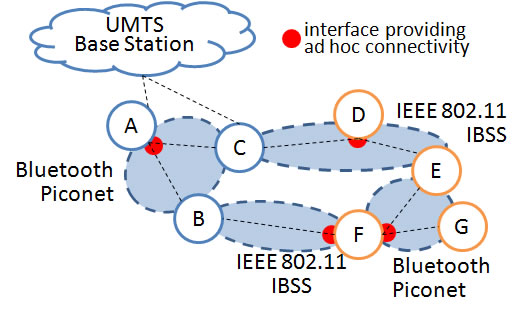The dynamicity of such a scenario pushes for distributed management; nodes should administrate their just created and mission-oriented subnet(s), by providing addresses with local scope and possibly exploiting the same address ranges in different subnets. Therefore, only nodes in the same subnets can directly identify and communicate each other. In addition, nodes can abruptly revoke shared resources with relatively high frequency, e.g., because of mobility.

- RAMP supports both unicast and broadcast communication abstractions, in order to provide a simple and wide-accepted basis for any general-purpose application need;
- RAMP easily enables the registration/discovery/invocation of services dynamically and temporarily offered by spontaneous network peers;
- to facilitate use and leverage adoption, RAMP facilities for communication/service management are transparent (independent) with regard to low-level implementation details about i) how the spontaneous network has been created (single-hop instantiation and control), ii) which specific wireless technologies are employed (e.g., Bluetooth, WiFi in ad-hoc mode, and WiFi in infrastructured mode), and iii) which operating system runs at each participating node.